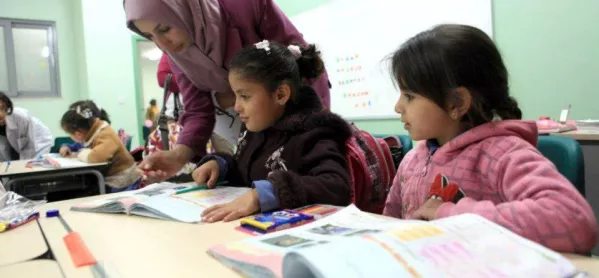In Jordan, teachers essentially work in two schools, although our classroom remains the same. In the morning, we teach Jordanian students. In the afternoons we teach children who are refugees. The contrast between the two groups can be substantial.
The “double-shift” system has been operating in our schools for several years now. The initiative was implemented by the Jordanian government to accommodate the influx of Syrian refugee children in need of schooling. It isn’t a sustainable solution, but there is no alternative right now.
Each shift I have about 40 to 50 students so the classrooms are crammed. The curriculum and lesson plans are the same for both group. At the end of the year, the students are supposed to have reached the same point.
As you can imagine, this is simply not possible. The two groups have very different needs and their progress is therefore very different, too.
Meeting the needs of all children
For the Jordanian children, their school day has been reduced, so meeting the demands of the curriculum is tough. For the refugee children, mainly Syrian, the barriers are even greater. They often come to Jordan having had very little schooling because of the war, and many are still emotionally scarred from what they have experienced; these children carry a huge emotional burden so it’s difficult for them to relax and just enjoy being in class and learn. Many of my students are forced to work in shops or in construction to support their families.
As a teacher, it is tough. We work longer hours so that each of our classes receives at least five hours of teaching a day, and with the help of the charity World Vision, we offer Syrian children catch-up classes during our holidays. But no matter how hard we try, supporting these kids and trying to find ways to help them cope with the unimaginable memories, loss and devastation is incredibly difficult. We need more time.
And yet, I can’t see an alternative, since we have too many students and not enough classrooms. Building new schools takes time and resources, which the international community has just pledged, but they are needed now.
Teaching half-day lessons isn’t ideal, nor is splitting the students up and preventing them from mixing, but I am glad that I can teach my Syrian students and help them to process their memories.
Raed Waheed is a teacher at the Ammar Bin Yaser Primary School in Jordan
Want to keep up with the latest education news and opinion? Follow TES USA on Twitter and like TES USA on Facebook.


